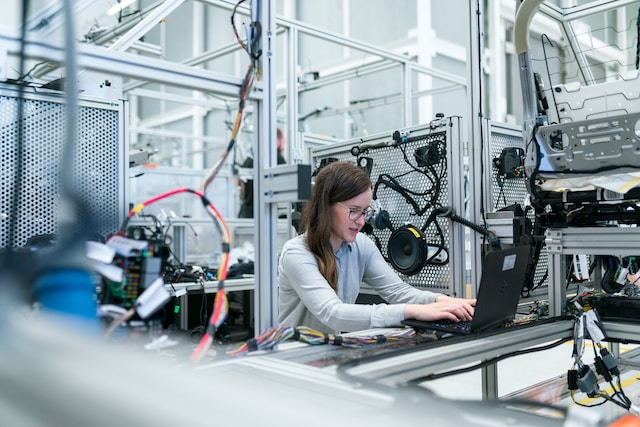Overall Equipment Effectiveness (OEE) is an essential success metric within manufacturing. This comprehensive measure is integral to gauging and improving the efficiency of production processes. OEE not only reveals the effectiveness of equipment utilization but also serves as a guide for pinpointing inefficiencies and implementing strategic improvements. Understanding and optimizing OEE is essential for manufacturers seeking to enhance productivity, quality, and profitability.

What is Overall Equipment Effectiveness (OEE)?
OEE is a vital metric in manufacturing, providing a quantifiable measure of equipment efficiency. It combines three key performance indicators: Availability, Performance, and Quality.
Availability is the measure of time that equipment is ready and available for operation as a percentage of the total planned production time. It accounts for unplanned downtime like equipment failures and planned stops such as routine maintenance.
Performance assesses the speed at which the equipment operates compared to its maximum capacity. Factors influencing performance include minor stoppages, idling, and reduced speed due to suboptimal operations.
Quality focuses on the production of goods that meet quality standards. It calculates the ratio of quality products to total production, accounting for defects and rework.
The Significance of OEE in Manufacturing
OEE serves as a comprehensive gauge of production efficiency, offering insights into various aspects of the manufacturing process. A high OEE score indicates a well-optimized production line, while a lower score flags potential areas of inefficiency. By isolating specific issues related to equipment, processes, or personnel, OEE enables targeted interventions to improve productivity.
Using OEE for Continuous Improvement
OEE is not just a diagnostic tool; it’s a foundation for continuous improvement. Regular monitoring and analysis of OEE help in understanding the impact of changes in processes, identifying trends, and benchmarking performance. This continuous cycle of measuring, analyzing, and improving plays a crucial role in lean manufacturing and operational excellence.
Challenges in Implementing OEE
While beneficial, implementing an effective OEE strategy can be challenging. It requires accurate and consistent data collection, which can be technically demanding. Ensuring employee engagement and understanding of OEE’s importance is also crucial, as the effectiveness of this tool relies heavily on the commitment of the workforce to drive improvements.
Integrating OEE with Modern Technologies
The integration of advanced technologies like the Internet of Things (IoT), Artificial Intelligence (AI), and Machine Learning (ML) enhances the effectiveness of OEE. IoT enables real-time data collection and monitoring, AI and ML offer advanced data analysis capabilities, providing deeper insights for predictive maintenance and process optimization. By implementing manufacturing analytics software, you can benefit from all of the aforementioned technologies, by gaining valuable insights into your production and making informed decisions based off this data.
The Role of OEE in Sustainable Manufacturing
OEE is also instrumental in driving sustainable manufacturing practices. By optimizing equipment use and reducing waste, OEE contributes to energy efficiency and minimizes the environmental footprint of manufacturing operations. This alignment with sustainability goals is increasingly important in the context of global environmental concerns.
Employee Training and OEE
Effective implementation of OEE is closely linked to employee training and involvement. Educating staff about the importance of OEE and involving them in the process of data collection and analysis fosters a culture of continuous improvement and operational excellence.
Conclusion
Overall Equipment Effectiveness is a multifaceted tool that extends beyond measuring equipment efficiency. Its role in identifying inefficiencies, guiding continuous improvements, integrating with modern technologies, and promoting sustainability makes it a cornerstone of modern manufacturing strategies. As manufacturing processes become more complex and competitive, the role of OEE as a central component in driving efficiency and sustainable practices is set to grow in importance.

